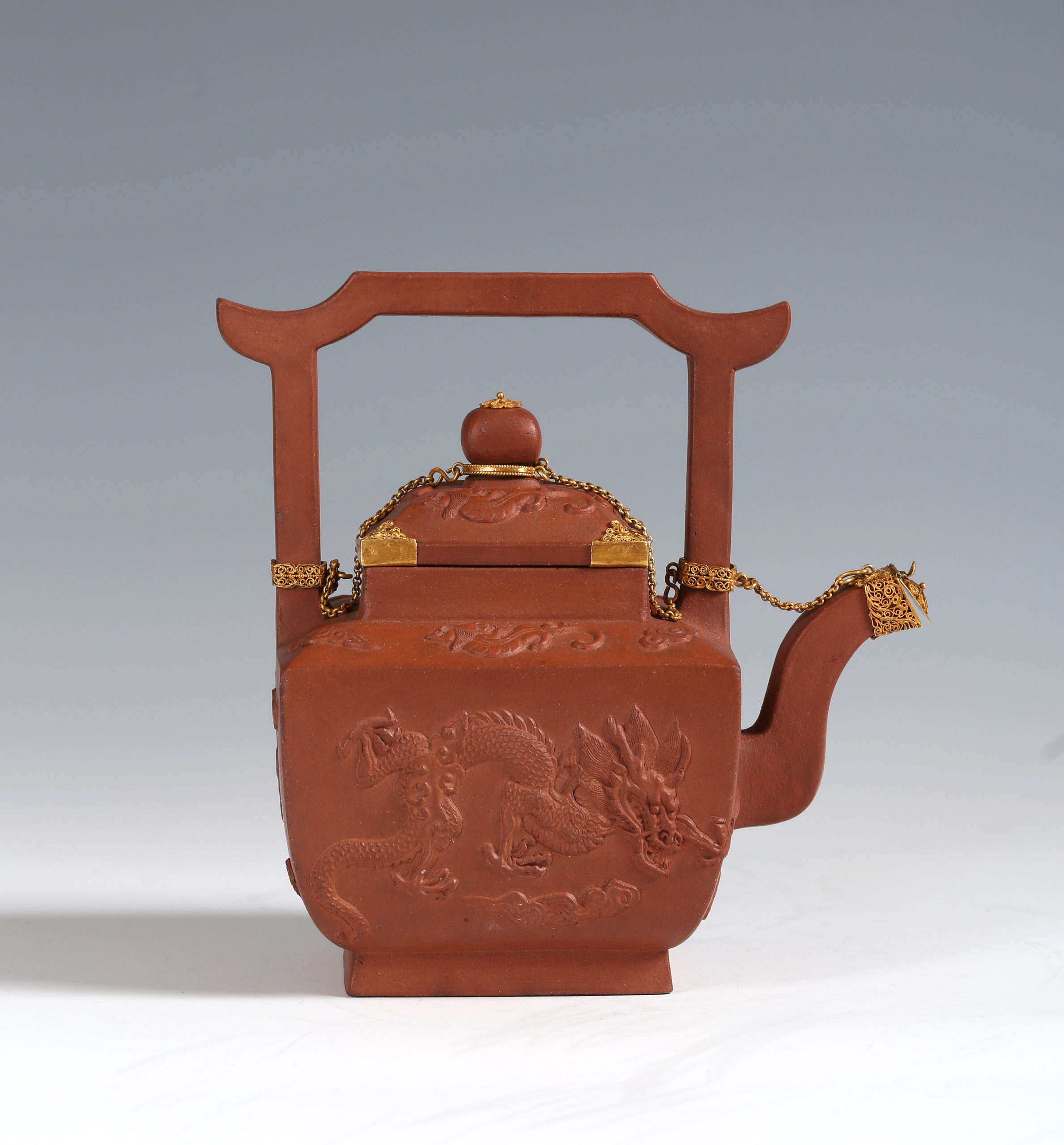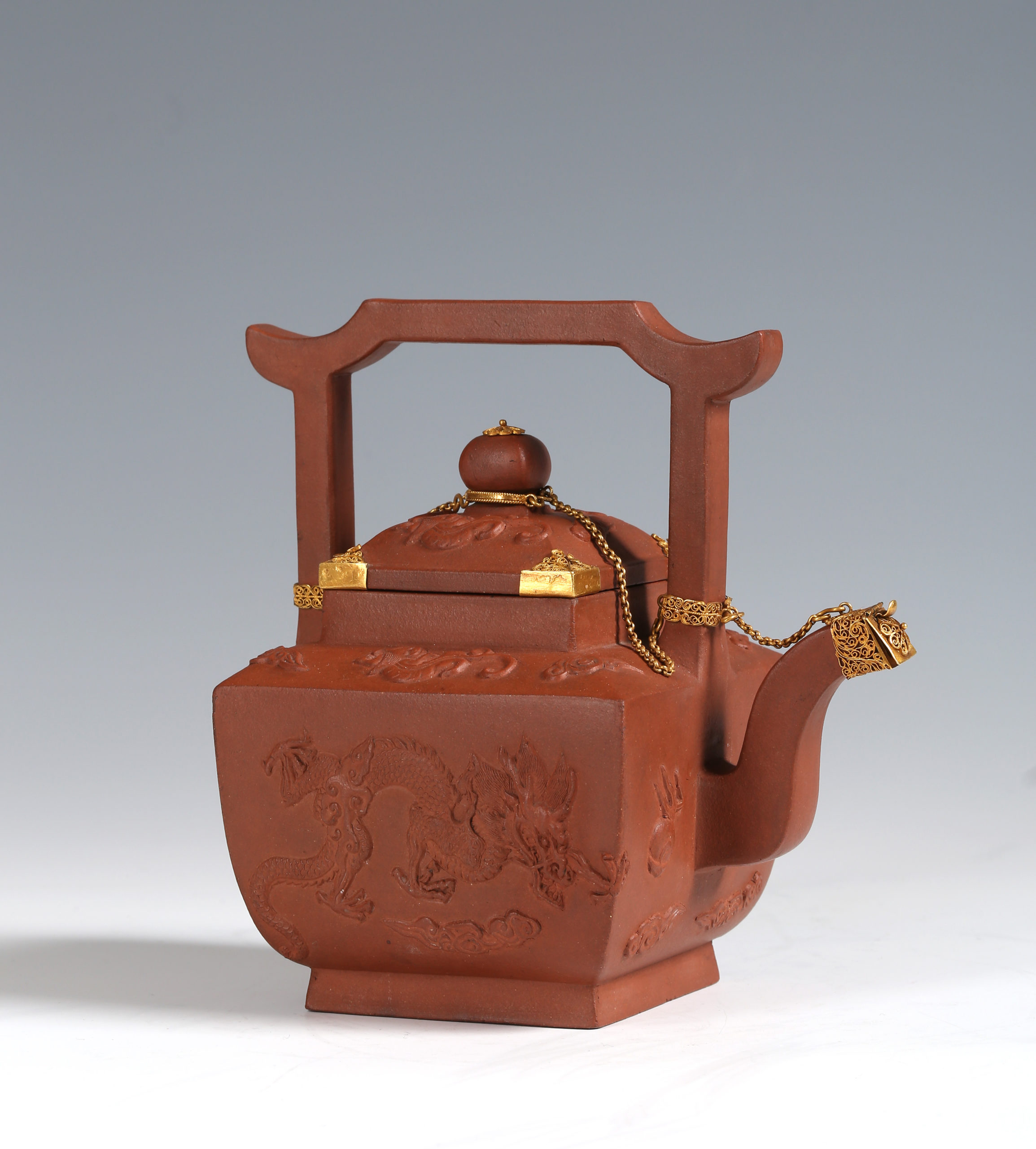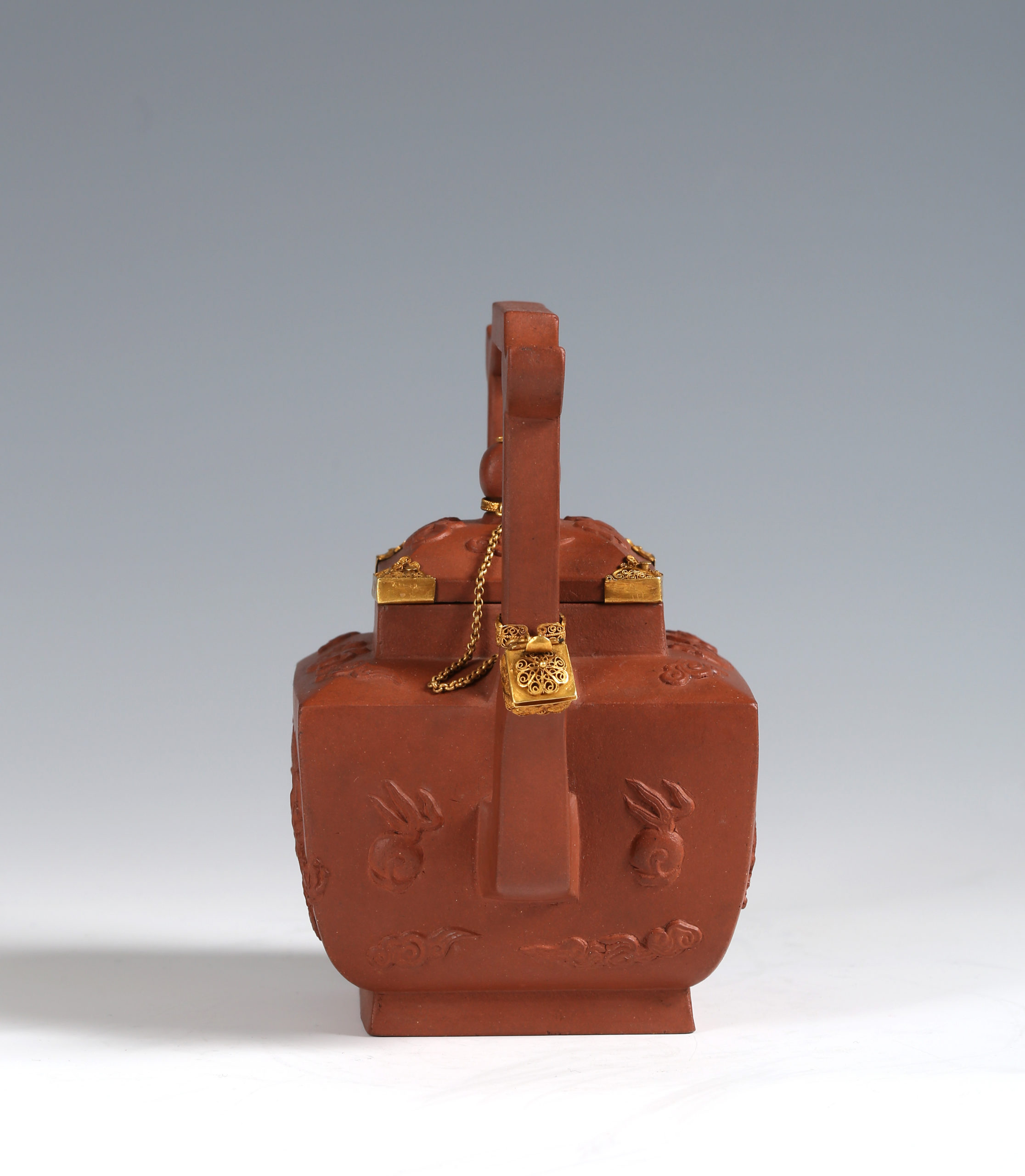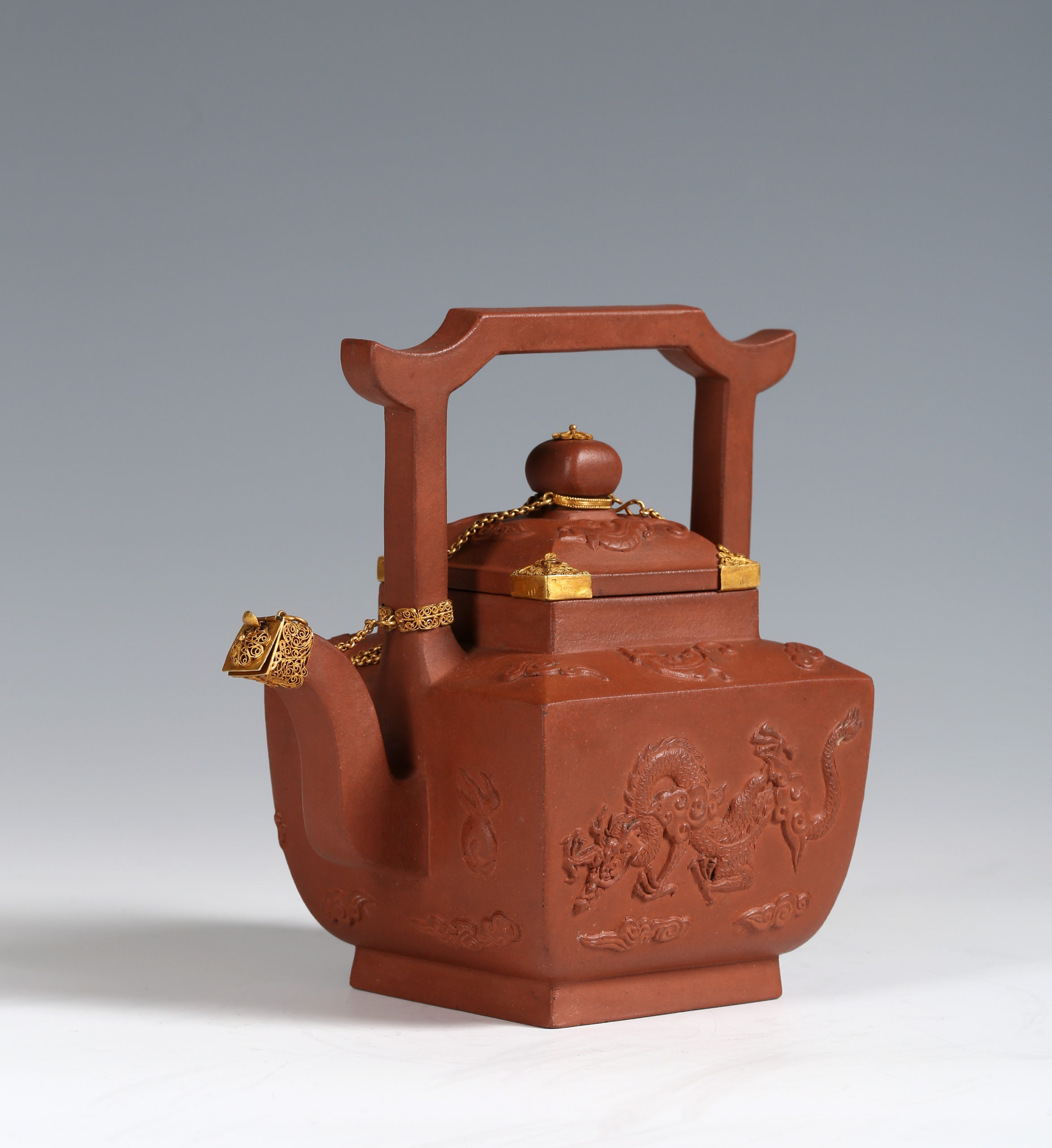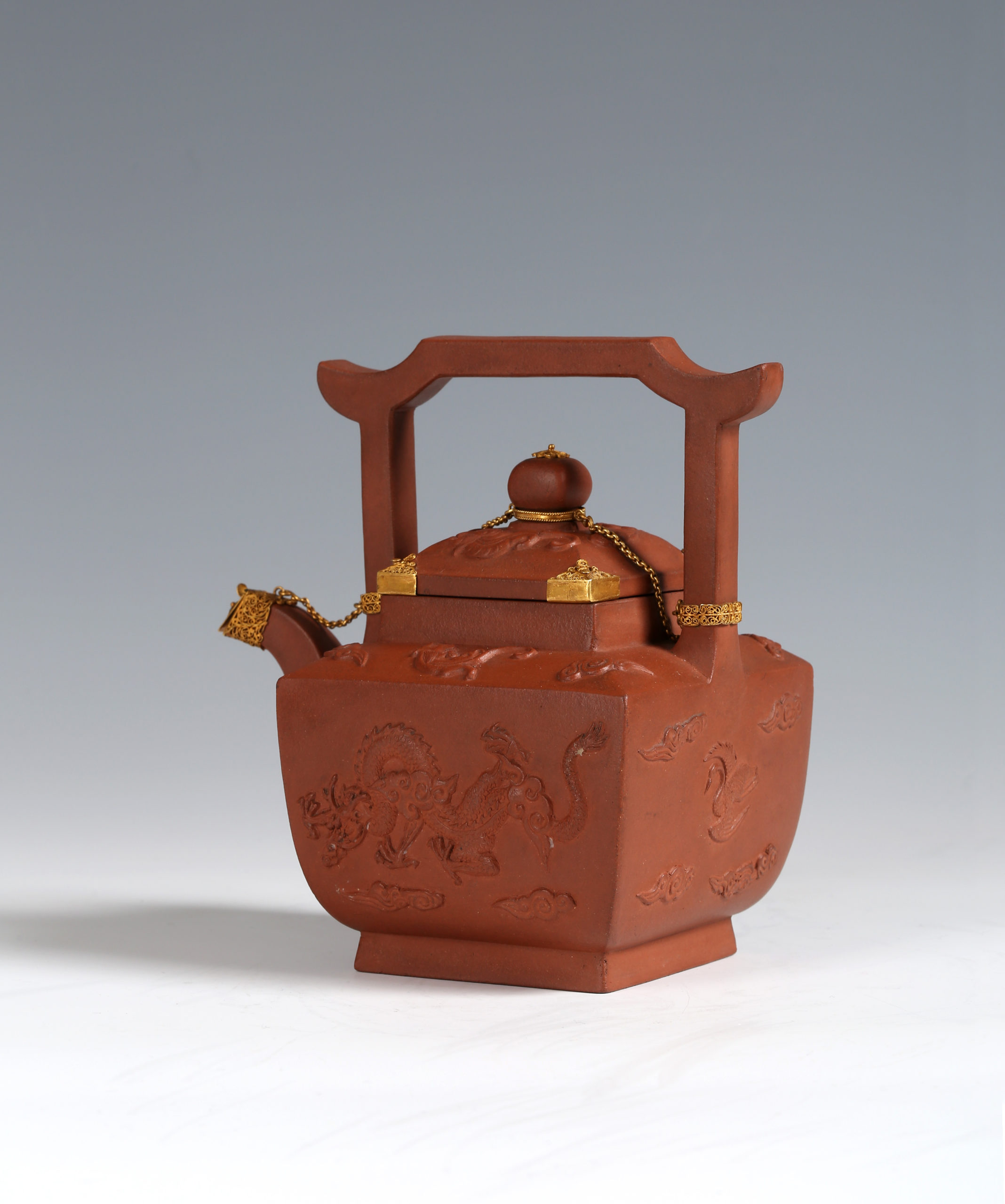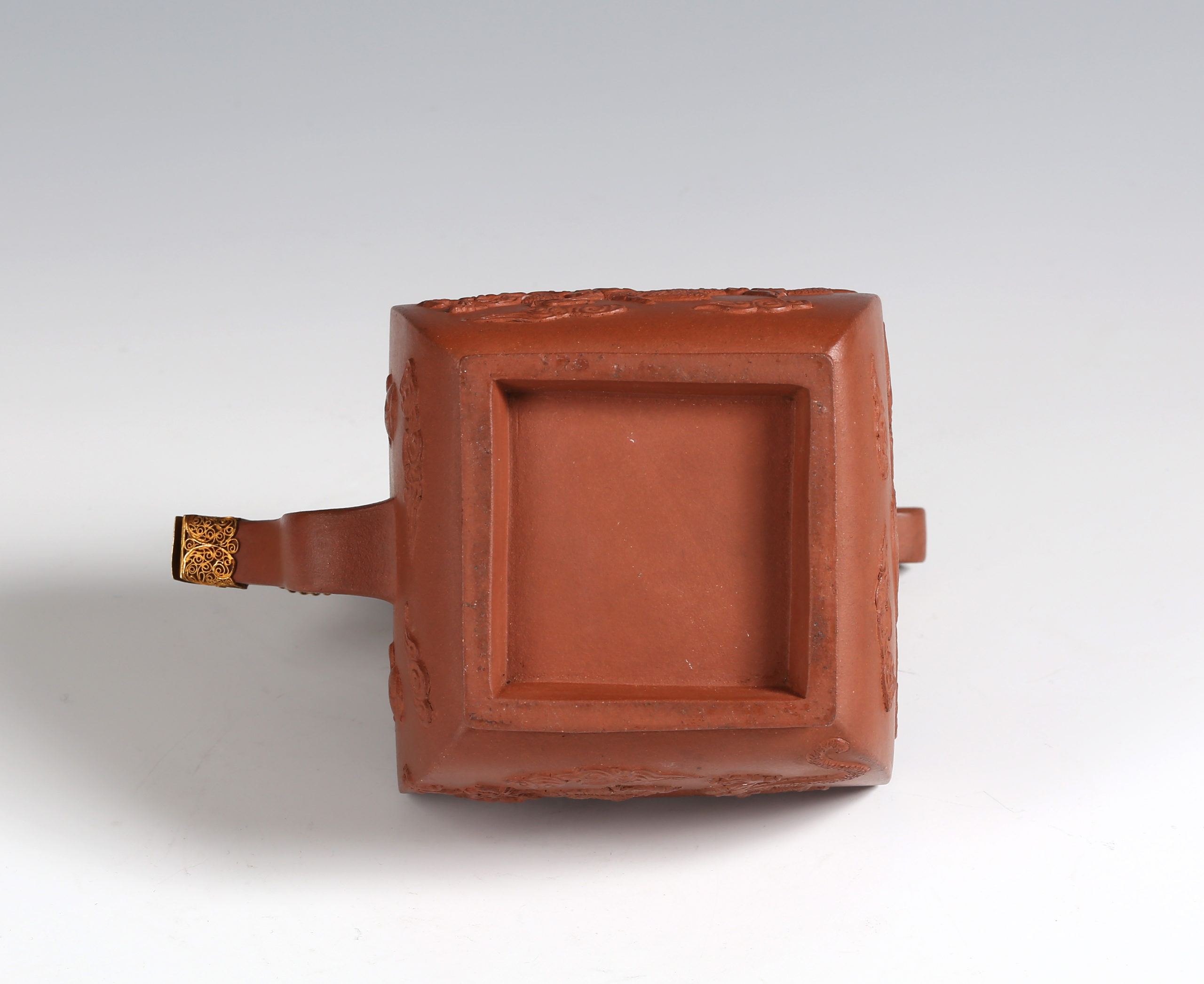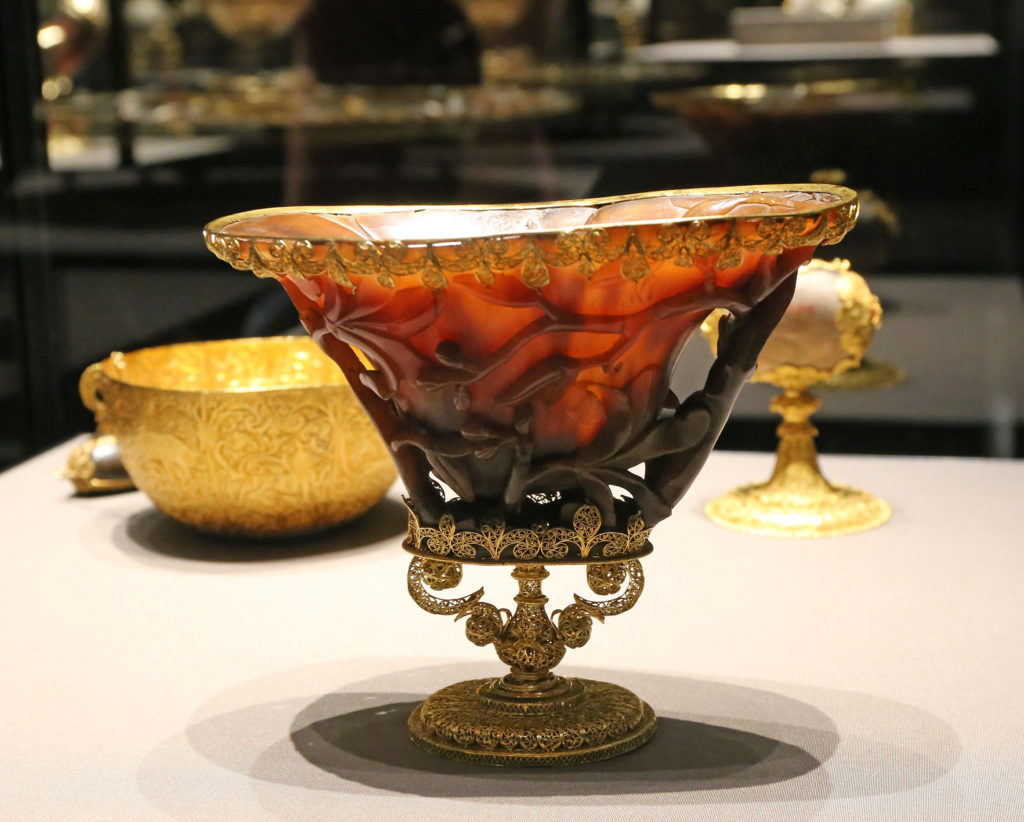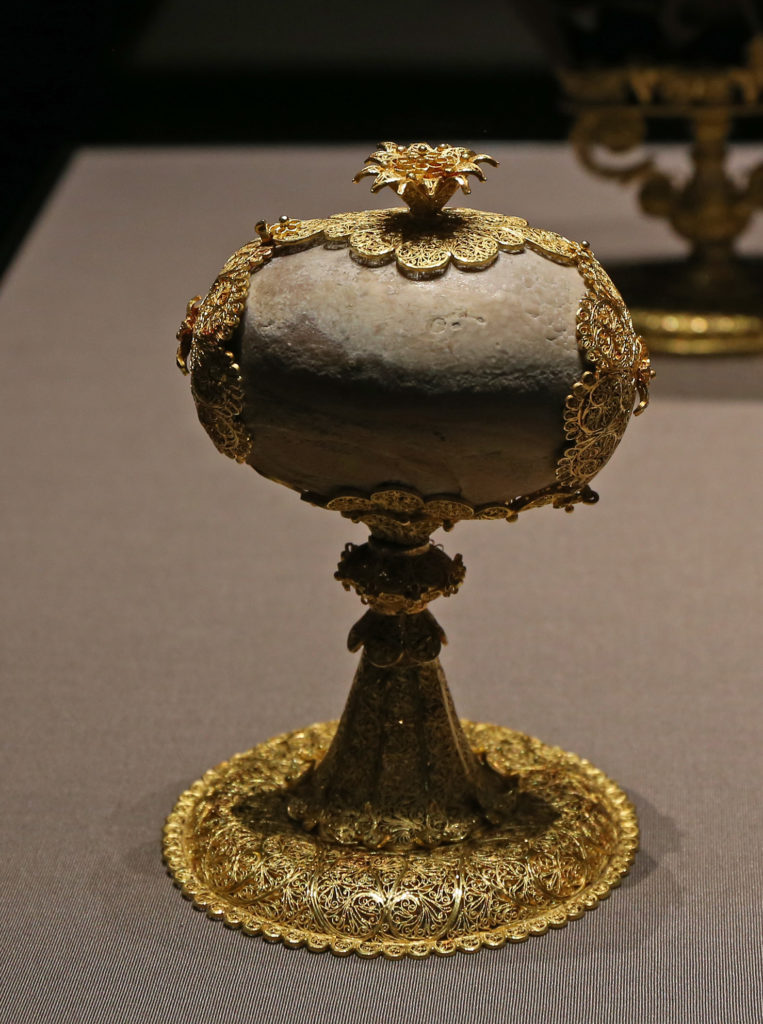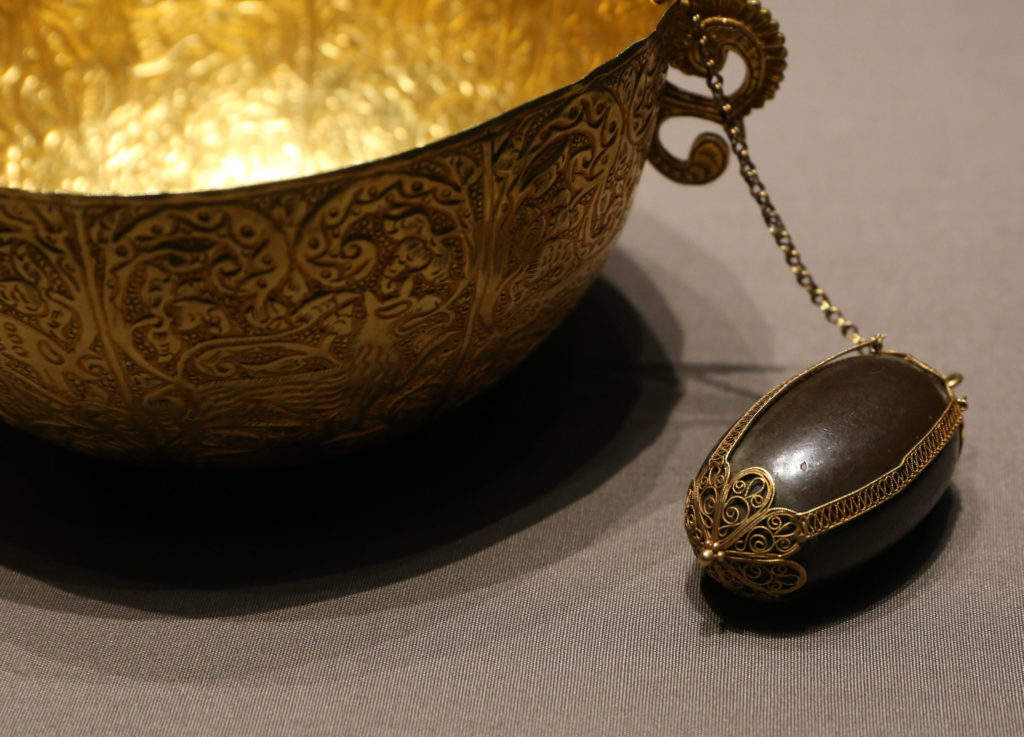The square body moulded with dragons chasing flaming pearls, surmounted by an overhead handle in the form of the roof of a pagoda.
The gold filigree mounts have been tested to a purity of 19.168kt and are certainly of Asian manufacture and very probably from Goa in India. These mounts relate closely to a group of gold-mounted pieces of the second half of the 17th century which includes a Chinese carved rhinoceros cup and two bezoar stones in the Hapsburg Kunstkammer in the Kunsthistorisches Museum in Vienna that are thought be of Goanese manufacture.
Patrice Valfré dates an hexagonal Yixing teapot with the same overhead handle to 1675 – 1725 (Yixing: Teapots for Europe, p. 214, no. 192) and another example in the British Museum with a more elaborate overhead handle to 1675-1700 (p. 220 no. 217, BM 1927,0419-4a).
 Herzog Anton Ulrich Museum, Braunschweig
Herzog Anton Ulrich Museum, Braunschweig
Two teapots, of similar form to the British Museum example, in the Herzog Anton Ulrich Museum, Braunschweig, also have filigree mounts that are of similar manufacture (Ströber p.65 no.s 61 & 62). These presumably entered the collection before the death of Herzog Anton Ulrich in 1714.
We acquired our teapot in Cape Town, South Africa, it would be nice to think that it had been there since the Portuguese or Dutch merchants of the 17th century brought it from China via India.
Condition:
Minute chip to rim of cover
Provenance:
The Andrew Newall Collection for the past thirty years and before thatin his late father’s collection (Albert Newall), Cape Town, South Africa
References:
Patrice Valfré, Yixing: Teapots for Europe, (Paris 2000)
Eva Ströber, Ostasiatika, Herzog Anton Ulrich-Museums Braunschweig, (2002)
CPM stated that the gold mounts tested as 19.168KT.
Acquired by the Ackland Art Museum, Chapel Hill, NC, USA


